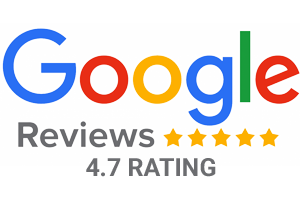Personal Injury Law
Work Furloughs
A furlough is a period of time during which an employee does not work and is not paid. It could last hours, days, or even months. Unlike a layoff, a furlough is intended to be temporary; the employee can expect to be brought back to work at some point, or may continue to work a reduced schedule. Whether to furlough employees is a business decision: a decreased budget, a lack of consumer demand, or other factors might justify or necessitate a temporary reduction of the workforce.
The California Labor Code is largely silent about furloughs. Because California law presumes that employment is “at-will,” employers generally have the freedom to implement furloughs as they see fit. However, employers may not use furloughs for illegal purposes, and furloughed employees are entitled to similar protections as those who are laid off. Here are some important things to know about being furloughed:
- Employers may not use furloughs to discriminate against employees based on protected characteristics, such as race, gender, age, or disability. If an employer only furloughs older employees, believing they will voluntarily retire, the employer has violated state and federal anti-discrimination laws.
- Employers may not use furloughs to retaliate against employees for protected activity. If an employee is furloughed simply because they filed a sexual harassment complaint or refused to do something illegal, then the employer has broken the law.
- A furlough which extends beyond a single pay period is considered a termination for the limited purpose of vacation pay. Ordinarily, when an employee is terminated or resigns, the employer must pay the employee all accrued, unused vacation wages immediately upon separation. While this obligation is not triggered by a one-day furlough, it would be triggered by a longer furlough, even if the employer intends to return the employee to their full schedule in the near future. If you have not been paid your vacation at the outset of a longer furlough, you will accrue waiting time penalties for each day you await your payout.
- You will qualify for unemployment insurance benefits if you are furloughed. If your paid working time is only partially reduced, then you will only receive partial benefits. If you are not working at all, your weekly benefit will be the same as if you were laid off. Because your employer intends to bring you back to work, your standard obligation to actively seek other employment may be waived.
- If you are a public employee or a union member, there may be additional rules or procedures your employer must follow before implementing furloughs. Be sure to read your collective bargaining agreement, or talk to a union representative, to determine if there are any limitations to your employer’s furlough power.
Example 1: San Mateo Janitorial Company contracts with local office buildings to provide cleaning services at night. Due to the COVID-19 pandemic, 50% of their clientele have moved to remote operations, eliminating much of the demand for the company’s services. The company announces that 50% of its employees will be furloughed for the next two months. It uses a randomized lottery to determine whom to furlough. Some of the most productive employees are furloughed, and some of the least productive employees retain their jobs. While this arrangement seems unfair, it falls within the employer’s discretion under “at-will” employment, and it was not implemented for an illegal discriminatory or retaliatory purpose.
Example 2: Nadia is a server at a restaurant in Pleasanton. In January, she tells her boss that she is pregnant and will start maternity leave in May. In March, pursuant to the COVID-19 pandemic, the county orders the restaurant to stop on-site dining. While most of the servers are able to retain positions as delivery drivers, the decrease in revenue necessitates the elimination of one position. The restaurant’s owner optimistically believes that normal operations will resume in July. She tells Nadia that she will be furloughed effective immediately, but can expect to return in July, or when her maternity leave ends, whichever is later. Nadia asks why she has been chosen. The owner tells her, “You have a lot on your plate and will be gone for awhile anyway. It just made the most sense.” The owner appears to have selected Nadia for furlough based solely on her pregnancy and planned maternity leave. Even if the owner’s intentions were good, she has implemented the furlough for an illegal, discriminatory purpose.
Example 3: Chevy is an auto mechanic for a used car lot. His boss instructs him to manipulate the odometer on a vehicle so that it can be sold for more than it is actually worth. Chevy refuses to take part in this fraudulent scheme. The next day, his boss reduces Chevy’s full-time work schedule to two days a week, stating that it is a furlough necessitated by the declining economy. Chevy engaged in protected activity by refusing to do something he reasonably believed to be illegal. Unless his boss can prove that Chevy would have been furloughed even had he not refused, this appears to be illegal retaliation.
An employment attorney at Spencer Young Law can help you understand your rights if you are furloughed. Call today for a free consultation.






